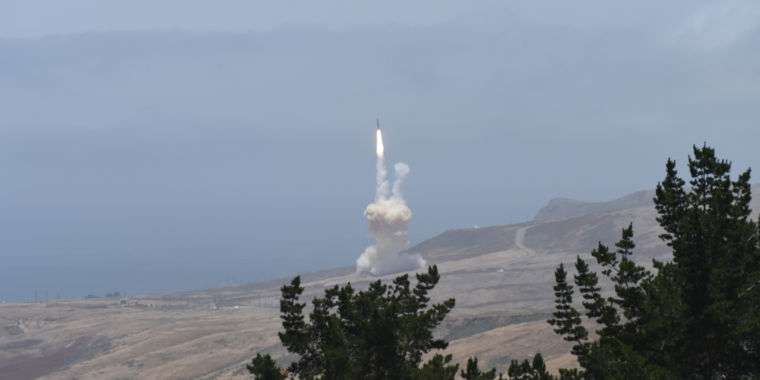
Video: DOD pulls plug on Boeing/Raytheon missile interceptor program

With North Korea throwing missiles around again and Iran continuing to depart from the nuclear framework after President Donald Trump exited the deal and re-imposed sanctions, there is as much reason as ever to be concerned about the United States’ nascent anti-ballistic missile defenses. While the Missile Defense Agency’s Ground-based Midcourse Defense System (GMD) and the Navy’s Aegis Ballistic Missile Defense system have shown some promise in testing, there are still some weaknesses in those systems that could be exploited by an attacker—including the use of multiple decoys to soak up attempted intercepts.
That was the rationale behind the Redesigned Kill Vehicle (RKV), a $1 billion program intended to create the US military’s next ballistic missile interceptor. A joint effort by Boeing and Raytheon, RKV was supposed to give GMD the capability of engaging multiple targets with a single interceptor. The RKV was intended to build on the Exo-Atmospheric Kill Vehicle, or EKV, currently deployed as part of the Missile Defense Agency’s Ground-based Midcourse Defense System. But the RKV program has been cancelled, and the Department of Defense has put the whole program back into competitive bidding after having been placed on hold for evaluation in May by Undersecretary of Defense for Research and Engineering Michael Griffin.
There are currently 44 interceptors equipped with the EKV deployed at Fort Greely in Alaska and Vandenberg Air Force Base in California. The Defense Department plans to add 20 more silos at Fort Greely for additional interceptors. But the EKV has had some problems even hitting a single simple target, scoring 11 hits on ICBM-like targets out of 19 tries.
Meanwhile, the US Navy will deploy a new Aegis Ashore missile defense system in Poland by the end of the year, and it’s looking at potential deployments in Guam and Hawaii. Japan is buying its own Aegis Ashore system to defend against potential North Korean missile threats. But the latest missile for the Aegis ballistic defense system, the SM-3 Block IIA, is also not trouble-free—a test firing from an Aegis Ashore test site in Hawaii last year missed its target, but it succeeded in a ship-based test last November.
Listing image by Missile Defense Agency




